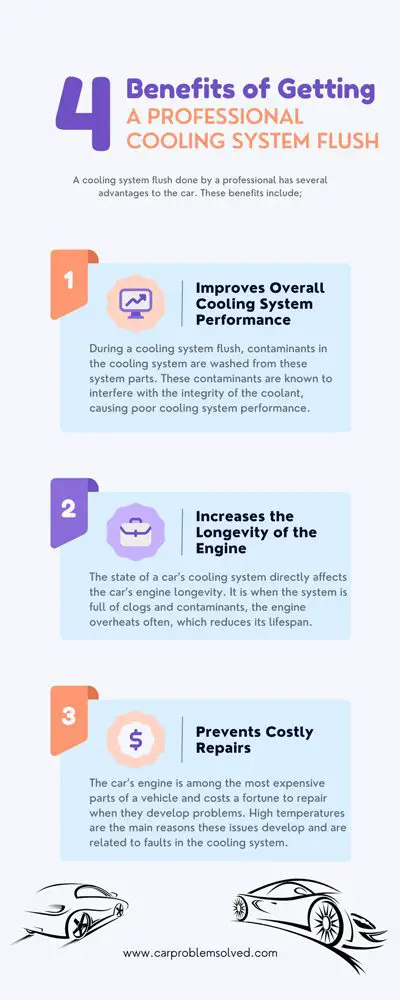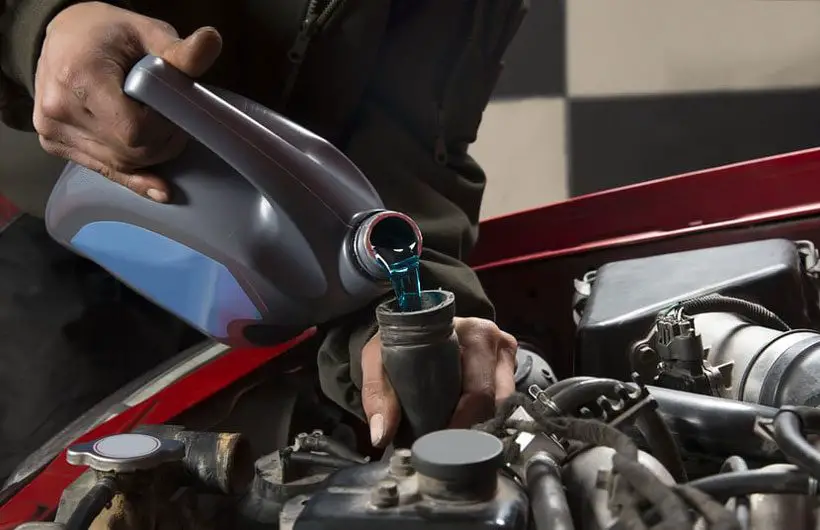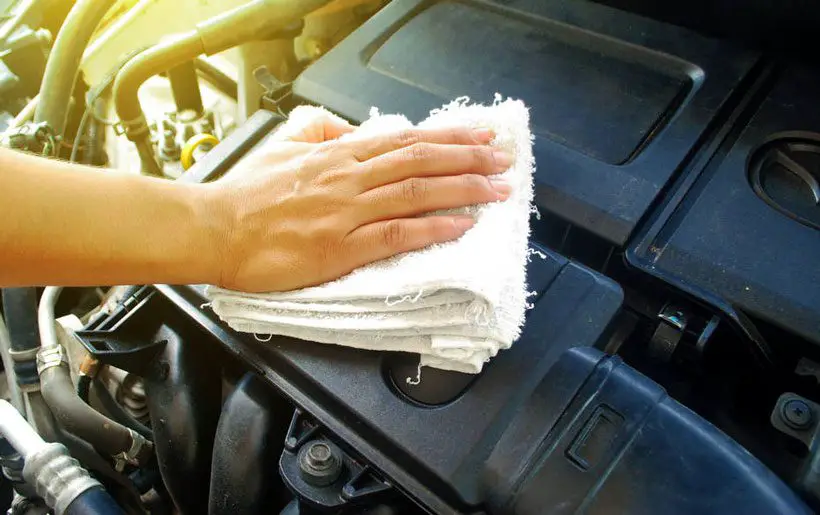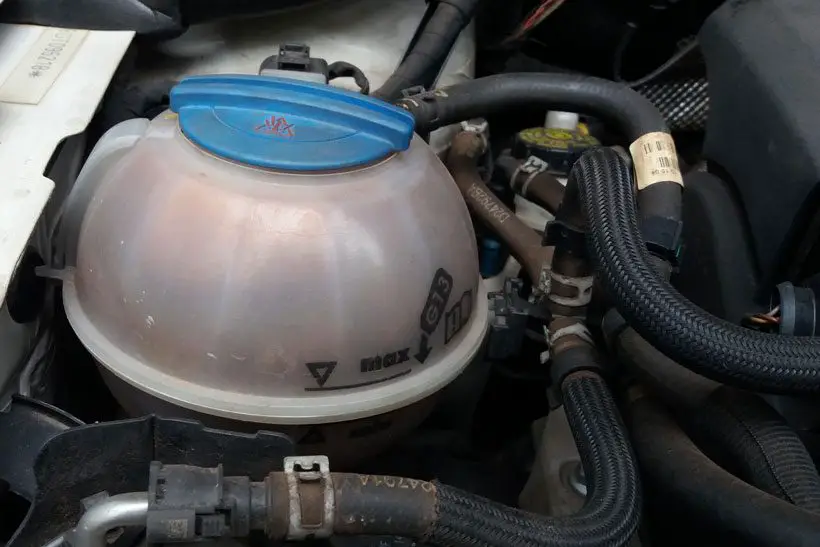Among the beneficial systems in a car is the cooling system, which helps the engine cool off and maintain ideal operating temperatures. However, due to its exposure to high temperatures and regular use, it is at a higher risk of developing problems.
A system flush done by a professional can help solve most of these problems and others related to the cooling system. Also, it prevents some of the issues that result from inadequate cooling from developing. Among the bonus, benefits is that the vehicle performance improves.
The article helps you understand the cooling system flush from what it is to its importance to the vehicle. Also, read on to learn about various signs that may tell that your car needs flushing.
The Importance of the Cooling System in Preventing Engine Overheating
Engine overheating is among the serious problems with a vehicle because it can lead to costly repairs and sometimes replacements. The cooling system, a set-up involving various parts, is installed to keep the engine cool and prevent damage.

This system pushes the coolant through channels in the engine, absorbing some of its heat. It then cools at the radiator before running back again through the system by the water pump.
Without the cooling system, the engine has to maintain its ideal operating temperatures, between 195 and 200°F. Also, sometimes the cooling systems help the vehicle warm up faster by circulating heat through it during a start-up.
What is a Cooling System Flush?
A cooling system flush is a maintenance process that involves removing all the coolant from the cooling system, then flushing and cleaning the system. This clears muck, rust, and build-ups from the system, leaving it clean and ready for a fresh coolant.

The system flush is doable at home if you have all the required tools and know-how. However, get a professional to flush the cooling system for better results.
Benefits of Getting a Professional Cooling System Flush:

A cooling system flush done by a professional has several advantages to the car. These benefits include;
1. Improves Overall Cooling System Performance
During a cooling system flush, contaminants in the cooling system are washed from these system parts. These contaminants are known to interfere with the integrity of the coolant, causing poor cooling system performance.

After the flush, the cooling system becomes more effective, and performance improves. The engine cools better, and other car functions, like the air conditioner, become more effective.
2. Increases the Longevity of the Engine
The state of a car’s cooling system directly affects the car’s engine longevity. It is when the system is full of clogs and contaminants, the engine overheats often, which reduces its lifespan.

After a flush on the cooling system, the engine properly cools and barely overheats. This means the engine wears less, and its lifespan increases significantly.
3. Prevents Costly Repairs
The car’s engine is among the most expensive parts of a vehicle and costs a fortune to repair when they develop problems. High temperatures are the main reasons these issues develop and are related to faults in the cooling system.
By flushing the cooling system, you prevent costly repairs to the engine and other parts.
How Often Should You Get a Professional Cooling System Flush?
Most modern vehicles can get over 100,000 miles without requiring a system flush as they have fewer problems. However, a professional cooling system flush should be after at least 30,000 miles. Some people prefer flushing it once a year, or after three years in service.

Nevertheless, a system flush may be necessary to solve some cooling system problems. For instance, if a driver uses the wrong coolant on their car, it is advisable to do a system flush before installing a fresh one.
Signs Your Car Needs a Cooling System Flush:

There are several ways to tell that your vehicle requires a system flush. They include:
1. Engine Overheating
The first and obvious way to tell your cooling system requires flushing is when your car’s engine regularly overheats. Since the cooling system is responsible for maintaining the engine’s temperatures, overheating can show there is a problem with it.
However, you may have to perform more diagnosis to tell the problem since one failing part may cause overheating.
2. Low Coolant Levels
Low coolant levels suggest that your vehicle may be having a leak and requires repairing. While refilling the coolant may seem like an option, it doesn’t solve the problem and requires a system flush.
Before the professionals flush the cooling system, they’ll check for leaks and repair them. This is one of the reasons you should let professionals do the system flushes instead of doing it yourself.
3. Discolored Coolant
A fresh coolant is greenish and is 50% antifreeze and 50% water. It can also be red or orange but should be translucent but not opaque. However, when the color of the coolant changes to brown, it’s no longer pure and requires replacing.

Contaminants, like engine oil or transmission fluid, are among the causes of color change in a coolant. You need a system flush to clear these impurities, after which you can add fresh coolant.
4. Coolant looks Rusty
Other than contaminants, the coolant may contain rust particles. The rust comes from parts of the cooling system, like the water pump or radiator. If not fixed soon, it can cause the water pump to fail and the radiator to overheat.
When you spot rust in the coolant, hire a professional to flush the system. The process will remove rust and other impurities from the system and prevent blockages.
Preventive Maintenance: Tips for Avoiding Cooling System-Related Problems
Cooling systems are expensive to repair when they develop a problem. Moreover, a problem with the system directly affects the engine, which also costs more to repair.

Luckily, some preventive maintenance can help you avoid these and other cooling system-related problems. These tips include;
1. Regular Maintenance
One of the ways you can prevent your car from developing most of the issues is through regular and timely maintenance. Through them, especially in the cooling system, you can spot a developing problem early and provide a fix.
2. Coolant System Checks
Another preventive maintenance tip is to perform regular coolant system checks. The checks involve inspecting for leaks, loose drive belts, water pumps, and other parts. During these inspections, you can notice a failing part and fix it on time.
For instance, when checking the coolant level, take more time to observe the coolant color to learn whether it has some contaminants. If the maintenance is done at a repair shop, they may be able to spot a leak on the hoses and fix it on time.
3. Monitoring Temperature Gauge
Another tip is to monitor the temperature gauge to learn when the engine starts to overheat. Since overheating is among the earlier signs of developing cooling system problems, the gauge will help you know earlier.

Also, when monitoring the temperature gauges, ensure the engine is not overloaded and maintains an ideal operating temperature.
4. Using Only the Recommended Coolants
Each cooling system has a suitable coolant that is manufacture tested and works best on it. Using other coolants besides this can bring about various problems, including rust and contamination in the system. Therefore, ensure you use only these coolants and mix them in the correct ratios.
If you’re interested in learning more about the reasons behind red coolant in your car and the causes of car engine overheating, our articles on why is my coolant red and causes of car engine overheating can provide valuable insights. Our article on coolant color explores the different colors of coolant and what they indicate, including the red color. Additionally, the article on car engine overheating covers the various factors that can lead to engine overheating and the potential consequences.Conclusion: The Benefits of Investing in a Professional Cooling System Flush for Your Car
As you now know, the cooling system is a crucial feature in a vehicle and must be in tip-top shape to perform adequately. One way to keep it performing, as usual, is through a system flush, which is done at most repair shops by a professional.
However, most people are unaware of when and why their vehicle needs a cooling system flush, all of which is answered in the article. Also, you will learn about the various preventive measures in this guide you can take to prevent cooling system-related problems.
